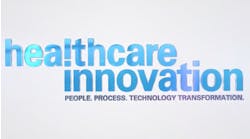During the Northeast Healthcare Innovation Summit on Oct. 3 in downtown Boston and sponsored by Healthcare Innovation, Scott Samways, director of data integration for Beth Israel Deaconess Care Organization (BIDCO), the accountable care organization (ACO) division of Beth Israel Leahy Health in Boston, presented the opening keynote, “Predictive Analytics for Data-Driven Care Management.” Samways shared with his audience highlights of the innovative work that he and his colleagues are doing around leveraging data to support leading-edge population health management and care management efforts.
As explained on its website, BIDCO, which recently became a part of the what is now Beth Israel Leahy Health, is “a value-based physician and hospital network and ACO that partners with providers to improve quality of care while effectively managing medical expenses. With its corporate office located in Westwood, Mass., BIDCO’s mission is to move healthcare forward by engaging providers in their communities to achieve success in a value-based delivery system.”
BIDCO, which earns $1.5 billion a year in revenues, encompasses 200,000 covered lives, 600 primary care physicians and 2,200 specialists, eight hospitals, and 35.6 million patient encounters documented in more than 20 EHR (electronic health record) platforms. It is a participating organization in the Medicare Shared Savings Program (MSSP), as well as with Medicaid and commercial health plans.
As Samways noted, BIDCO services encompass a broad range of activity. Among the elements involved are population health (which in turn represents a hybrid model for community-based, high-risk complex care management and disease management; a home healthcare and SNF (skilled nursing facility) quality collaborative for care coordination; and ED utilization management for avoidable admissions/visits); a performance improvement program that encompasses a Performance Improvement Facilitator for each practice; an EHR optimization program; facilitation for practice redesign; the facilitation of understanding medical economics dashboards; analytics and reporting (including quarterly financial performance reporting for risk units; desktop access to population health management tools; medical economics dashboards; and data surveillance); as well as contracting and network management services and enrollment services.
What’s more, Samways said, he and his colleagues have spent at least six years so far integrating more than 160 individual EHRs across 20-plus EHR platforms, with more than 106 individual clinical data feeds and more than 30 claims feeds across more than 30 geographic locations, with more than 2 million patient records involved to date.
“Interoperability is much more complicated than it looks,” Samways told his audience. “But we do the work: we connect the pipes, we get the data going. Then the reality sets in: is the data usable? In a lot of cases, it’s not. And so a huge amount of work around data normalization must take place. The EHR data we leverage—not everyone documents in the same way or at the same level, and that can require redesign of workflow in the practice, or may even require different configurations in the EHRs. And we don’t have an HIE standard in how we’re delivering that data,” Samways said.
“We have structured data, unstructured data, and coded data,” Samways told the audience. Inevitably, he said, “We’ve had to meet our vendors where they are. They don’t always like to talk to each other, but we are connecting some of them through their back ends. Other vendors have really robust data feeds where they’ll send you the data on a nightly basis.” All the heterogeneity among diverse EHR vendors remains problematic, he said. “We get into the dogs and cats things,” he said, referring to the tremendous diversity involved. “We’ve got a whole set of EHRs with all different capabilities. Sometimes we’re using flat files, sometimes customized CCDAs. And we have a customized system that uses what we call CCDAs”—consolidated clinical document architectures—but, he added, the organization’s custom-developed CCDAs remain cumbersome.
Importantly, he noted, “Data mapping, normalization, and validation are very resource-intensive and very challenging for a team to maintain.” And the real-time performance in terms of successfully getting the right data to the right people at the right time remains a work in progress, he said. “How do we get usable data that the network trusts to the right people in a timely way? It’s one step at a time, and it’s a journey. We’ve been working six years now to identify and use data” in optimal ways.
He also introduced the idea of the “dark data lake”—the vast amount of data in the overall system that has not yet been processed or used in any way. “It’s data we’re not yet mapping or using. We still want it, but a lot of work is involved to normalize, codify and map it.”
Moving forward, Samways and his colleagues are working to identify the most impactable patients, to match them with appropriate programs; to implement consistent, standardized, evidence-based workflows and care paths; to measure outcomes to identify best practices, to integrate platforms across multiple EHRs; and manage performance, both clinical and operational, across the health system.
What’s more, Samways said, he and his colleagues are moving ahead to begin to leverage predictive analytics. “It’s not necessarily about identifying things happening right now,” he said. “Care programs can’t really impact inpatients or those in EDs. And it’s not about finding the exact outcome in the future. It is about identifying patterns and to infer trends and potential outcomes in the future, using existing information. It’s the marriage of art and science, for us. It’s taking clinicians’ knowledge and our rich data set, and putting them together. The goal is to improve conditions and outcomes, reduce cost and variation, and steer patients to the appropriate programs.”


